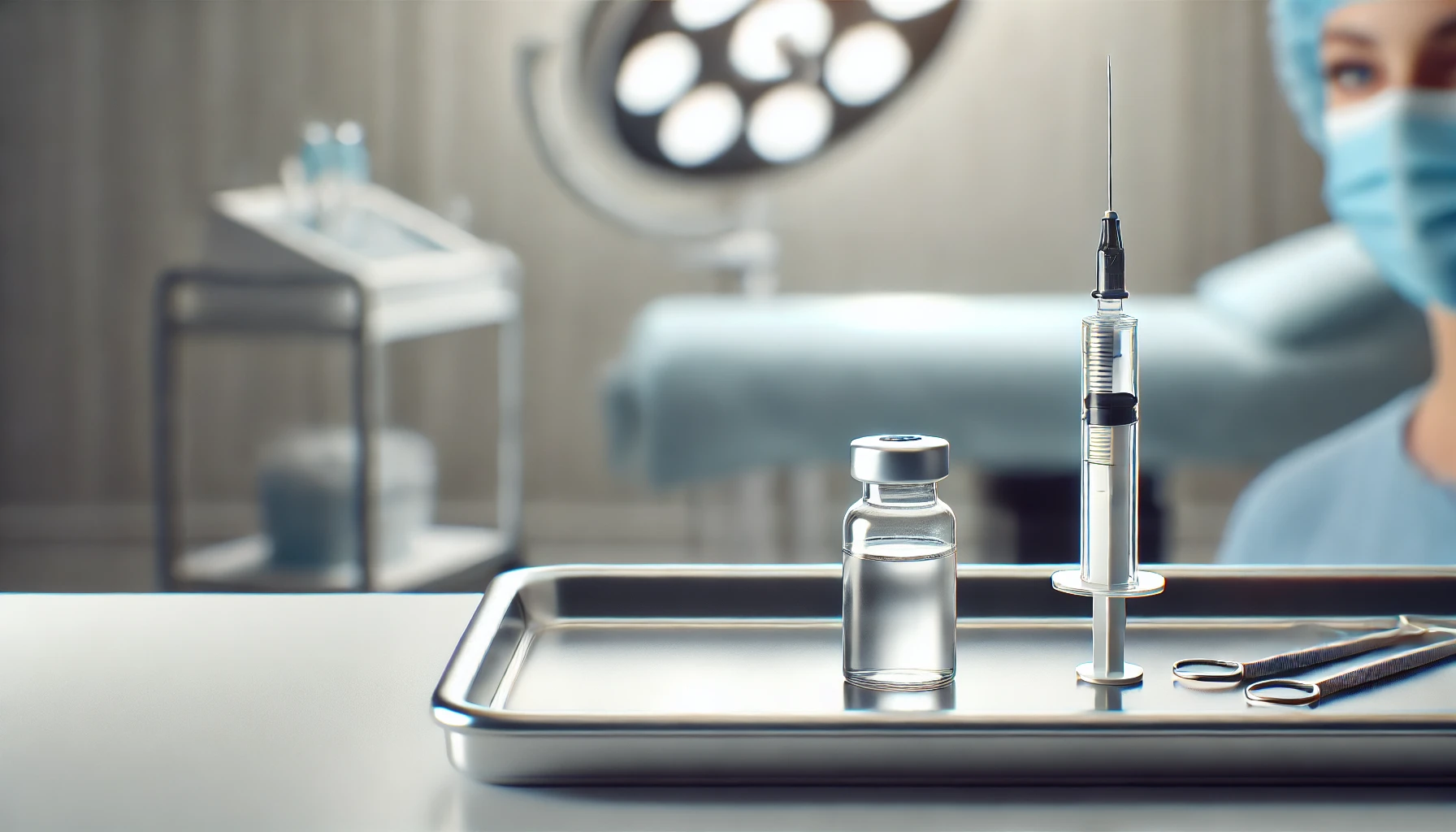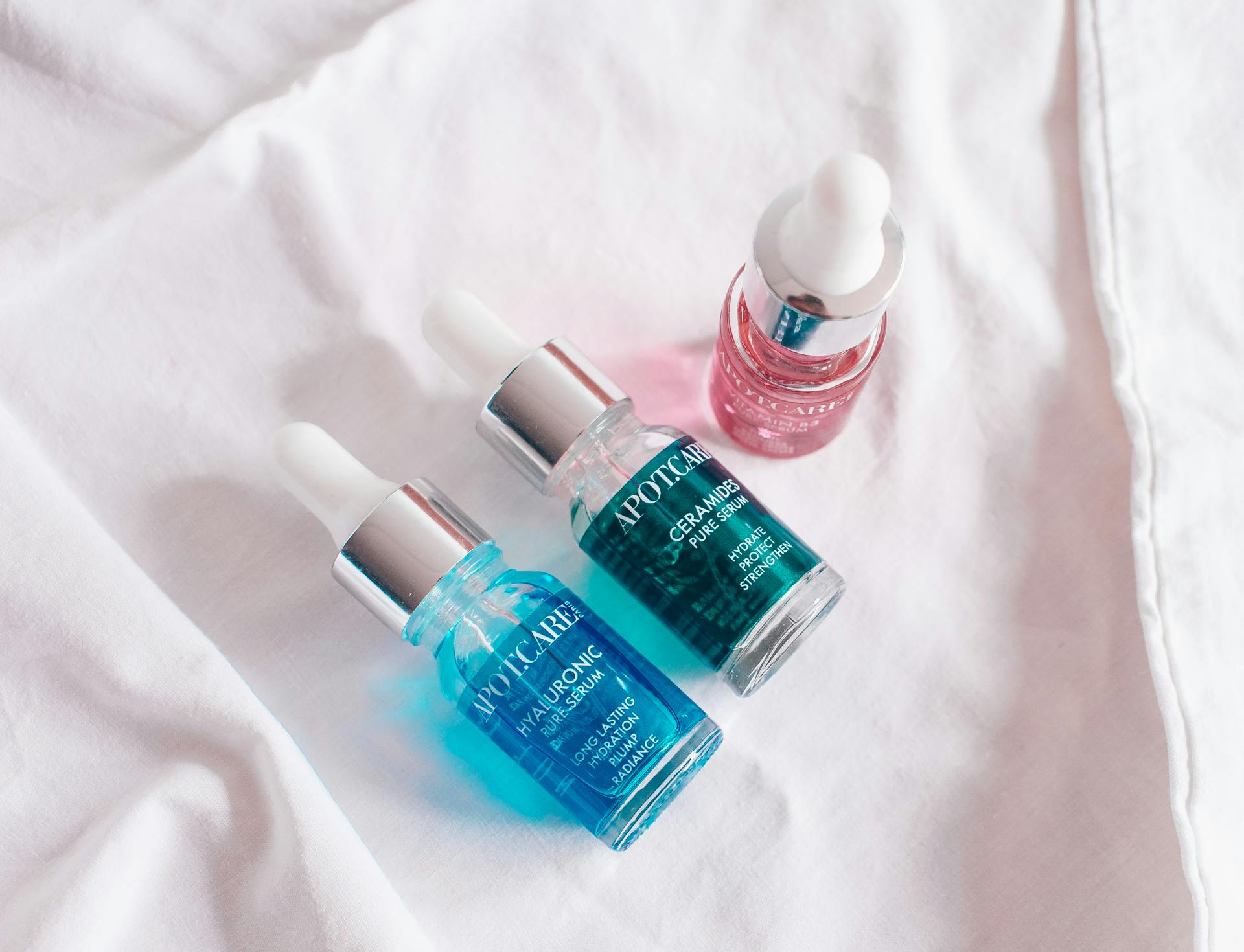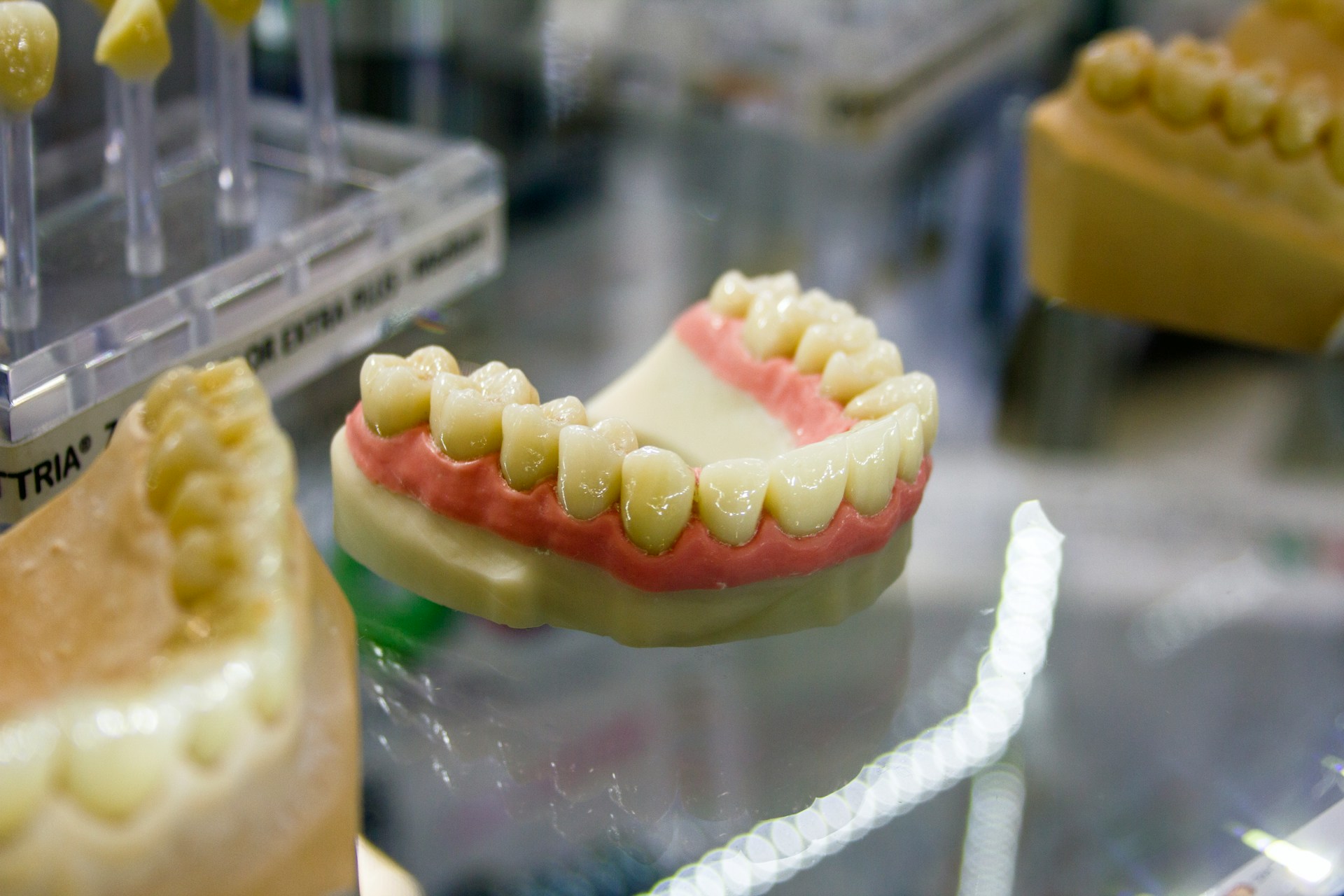Filler treatments have become increasingly popular as a non-surgical method for enhancing facial features and restoring a youthful appearance.
This guide delves into the different types of fillers available, such as hyaluronic acid and calcium hydroxylapatite, discussing their benefits as well as potential risks.
If you are contemplating the use of fillers, it is essential to select a qualified practitioner and to be well-informed about what to expect during the treatment process.
We invite you to explore this information to ensure safe filler treatments in the UK.
What Are Filler Treatments?

Filler treatments are non-surgical aesthetic procedures that involve injecting substances such as hyaluronic acid and collagen into targeted areas of the face to enhance one’s appearance.
These cosmetic fillers aim to restore volume, reduce wrinkles, and improve the overall aesthetics of the face, making them a popular option for those looking to achieve a more youthful appearance.
The procedures can be completed relatively quickly and generally require minimal downtime. However, it is crucial to consult qualified practitioners who are well-versed in the latest cosmetic regulations to ensure the safety of the patient.
What Are The Different Types Of Fillers?
In aesthetic medicine, there are various types of fillers, each with its unique properties and applications to help achieve the desired treatment results.
One of the most common types is hyaluronic acid fillers, which are well-regarded for providing immediate volume and hydration. Another option is calcium hydroxylapatite fillers, which are known for their longer-lasting effects.
Additionally, poly-L-lactic acid and polymethylmethacrylate fillers are popular choices that offer distinct advantages for facial volumisation and wrinkle reduction.
It’s important to understand the differences among these filler types, as this knowledge is essential for making informed decisions about cosmetic enhancement.
1. Hyaluronic Acid Fillers
Hyaluronic acid fillers have become one of the most sought-after options for facial volumisation and wrinkle reduction, largely due to their remarkable ability to attract moisture and impart a plump appearance. These fillers are quite versatile, effectively used in various areas such as the lips, cheeks, and under the eyes, delivering natural-looking results with minimal downtime. Their established safety and efficacy make hyaluronic acid fillers a preferred choice for many individuals seeking cosmetic enhancement.
The utility of these fillers goes beyond mere aesthetics; they can also help address concerns such as facial scarring and volume loss associated with ageing. The benefits of hyaluronic acid fillers can last anywhere from several months to a year, depending on the specific product utilised and the individual’s metabolism.
While most individuals tolerate these treatments well, potential side effects such as swelling, bruising, or, in rare instances, allergic reactions should not be disregarded. Therefore, it is paramount for individuals to seek treatment from qualified practitioners who possess the necessary expertise to ensure both safety and optimal results.
With the right approach, users can achieve a rejuvenated appearance while effectively minimising the risks associated with cosmetic procedures.
2. Calcium Hydroxylapatite Fillers
Calcium hydroxylapatite fillers are known for providing a more substantial lift and are often utilised for addressing deeper wrinkles and enhancing facial contours. Their biocompatibility is noteworthy, as these fillers also stimulate collagen production, resulting in effects that tend to last longer compared to other options.
Many patients report high satisfaction rates, appreciating the natural feel of the fillers and their ability to improve skin elasticity over time.
These fillers are particularly effective in volumising areas such as the cheeks, jawline, and temples, giving patients a youthful appearance without an artificial look.
As with all cosmetic treatments, there are inherent risks, including bruising, swelling, or, in rare instances, allergic reactions. Experts typically advise following specific aftercare instructions, such as refraining from strenuous exercise and avoiding direct sunlight for a few days after the treatment, to ensure optimal results.
In contrast to hyaluronic acid fillers, which provide more immediate results but may necessitate frequent touch-ups, calcium hydroxylapatite fillers often deliver a longer-lasting solution, making them a favoured choice for individuals seeking significant and enduring facial enhancement.
3. Poly-L-lactic Acid Fillers
Poly-L-lactic acid fillers are distinct in their method of action, as they stimulate the body’s natural collagen production. This characteristic makes them particularly suitable for gradual facial rejuvenation.
Unlike traditional fillers, which deliver immediate results, these fillers provide subtle enhancements that unfold over time, leading to natural-looking aesthetic outcomes. Patients typically value the long-lasting effects, which can persist for up to two years with appropriate maintenance.
This innovative approach allows for a more nuanced and sustainable method of volumisation, emphasising the restoration of facial structure and elasticity rather than simply filling in lines. Commonly treated areas include the cheeks, temples, and nasolabial folds, where volume loss often becomes noticeable with age.
It is crucial for individuals contemplating this treatment to fully understand the process. Comprehensive patient education is essential, particularly regarding what to expect after the treatment, as the results develop gradually.
Follow-up sessions are frequently advised to optimise results, ensuring that the desired effects are effectively achieved over time.
4. Polymethylmethacrylate (PMMA) Fillers
Polymethylmethacrylate (PMMA) fillers are a form of semi-permanent filler that offers enduring results for facial volumisation and wrinkle reduction. Unlike temporary fillers, PMMA fillers consist of tiny microspheres that remain within the skin, providing long-term enhancement. It is important for patients to be aware of the potential risks and complications associated with these fillers, including the possibility of adverse effects.
These fillers are noteworthy for their impressive durability, often lasting several years, in contrast to hyaluronic acid-based fillers, which typically necessitate more frequent touch-ups. Along with their longevity, PMMA fillers can enhance skin texture and volume, making them especially attractive for individuals seeking significant and lasting changes.
However, it is essential to conduct a comprehensive skin assessment prior to treatment, as individual factors can influence both results and safety. Understanding the appropriate candidacy for PMMA fillers can significantly reduce complications, thereby ensuring a safer and more effective enhancement process that aligns with one’s desired aesthetic outcomes.
What Are The Benefits Of Filler Treatments?

Filler treatments provide numerous benefits, which is why they are a popular option for individuals seeking non-surgical cosmetic enhancements.
These aesthetic procedures go beyond reducing wrinkles and smoothing fine lines; they also enhance facial features like lips and cheeks, improving overall facial aesthetics. While the cost of dermal fillers in the UK varies based on the type of filler and treatment area, many patients find the investment worthwhile due to the minimal downtime and immediate results these treatments offer.
This convenience makes fillers especially appealing for those with busy lifestyles, allowing them to achieve their aesthetic goals efficiently.
1. Reduces The Appearance Of Wrinkles And Fine Lines
One of the primary advantages of filler treatments is their impressive ability to diminish the appearance of wrinkles and fine lines, providing patients with immediate results. These injectable fillers function by restoring lost volume and hydration, leading to a smoother skin texture and enhanced facial contours. Many patients express high levels of satisfaction after their treatments, often noting the natural look and feel of their revitalised skin.
Research indicates that patients can experience a reduction in fine lines of over 80% following professional administration, with results lasting up to a year or more, depending on the type of filler used.
For example, hyaluronic acid-based fillers are particularly recognised for their hydrating properties and relatively non-invasive nature. Patient feedback frequently underscores the quick recovery time and minimal discomfort associated with these procedures.
It is vital for individuals to maintain realistic expectations regarding the outcomes of filler treatments. While these fillers can significantly mitigate signs of ageing, it is important to understand that results may vary among patients to ensure a satisfactory experience.
2. Enhances Facial Features
Filler treatments have gained significant recognition for their ability to enhance specific facial features, such as lips and cheeks, resulting in a more balanced and aesthetically pleasing appearance. Lip fillers can provide added volume and definition, while cheek fillers help restore youthful contours. This versatility makes these treatments a popular choice for individuals seeking cosmetic enhancement. The results can be customised to fit each patient’s aesthetic goals, ensuring that they are satisfied with the final outcome.
Beyond enhancing the lips and cheeks, various types of fillers can be strategically applied to areas such as the jawline, temples, and under-eye regions, offering a comprehensive approach to facial rejuvenation. Each technique, whether it involves precision injections or layered placements, is crucial in achieving the desired look, whether that means enhancing jawline definition or reducing the appearance of dark circles.
During the consultation process, practitioners engage closely with patients to discuss their specific desires and concerns, aligning expectations. This collaborative dialogue is essential, as it helps tailor treatments that not only enhance beauty but also maintain a natural look, ensuring that patients leave the clinic feeling confident and satisfied.
3. Restores Volume And Fullness
One notable advantage of filler treatments is their capacity to restore volume and fullness to areas of the face that may have experienced a loss of elasticity due to age or lifestyle factors. This restoration is particularly effective in the midface, under-eye regions, and temples, resulting in a more youthful and vibrant appearance.
By utilising high-quality fillers, patients can achieve long-lasting results that significantly enhance their overall facial aesthetics.
Among the options available, hyaluronic acid fillers such as Juvederm and Restylane are favoured for their natural-looking results and compatibility with the body’s own tissues. These fillers can effectively smooth out wrinkles, enhance cheekbones, and rejuvenate the hollows beneath the eyes.
To achieve optimal outcomes, it is essential to follow post-treatment care guidelines. This may include:
- Avoiding strenuous exercise
- Excessive sun exposure
- Applying ice packs to minimise swelling
By adhering to these recommendations, individuals can maintain their rejuvenated appearance, prolonging the effects of their filler treatment and ensuring that the desired volume is preserved for an extended period.
What Are The Risks And Side Effects Of Filler Treatments?

While filler treatments can yield remarkable aesthetic results, it is important to understand the potential risks and side effects that come with these procedures.
Common side effects may include bruising, swelling, and tenderness at the injection site. In rare instances, more serious complications can occur, such as allergic reactions or nerve damage. Being aware of these risks is essential for ensuring patient safety and for making informed decisions about aesthetic procedures.
1. Bruising And Swelling
Bruising and swelling are common and expected side effects after filler treatments, typically peaking within the first 24 to 48 hours. While these reactions are usually mild and resolve on their own, it is important for patients to follow proper aftercare instructions to minimise any discomfort and promote healing.
Understanding these potential side effects helps in setting realistic expectations for both recovery and treatment outcomes.
To ensure a smooth recovery, adhering to recommended aftercare practices is essential. Patients are advised to apply cold compresses to the treated area, as this can significantly reduce swelling and provide relief from associated discomfort.
Additionally, avoiding strenuous exercise, extreme temperatures, and alcohol for at least 24 hours after the treatment can further help in minimising bruising. Keeping the head elevated while sleeping also aids in reducing inflammation.
By implementing these strategies, individuals can effectively lessen the side effects of fillers and enhance their overall treatment experience.
2. Infection
Infection is a potential risk associated with filler treatments, although it is relatively rare when these procedures are conducted in sterile environments by qualified practitioners. Proper hygiene and adherence to clinical guidelines during the treatment process are essential in preventing infection. Patients should be aware of the signs of infection and promptly communicate any concerns with their practitioner.
A clean treatment environment significantly reduces the likelihood of contaminants that could lead to complications. It is important for individuals considering such treatments to select facilities that prioritise strict hygiene protocols and utilise sterile instruments.
After the procedure, it is vital to remain vigilant for signs such as increased redness, swelling, warmth, or unusual discharge at the treatment site. Should any of these symptoms occur, reaching out to the practitioner as soon as possible is crucial.
By understanding and managing these risks, patients can greatly enhance their overall safety and satisfaction with filler treatments.
3. Allergic Reaction
Allergic reactions to filler substances, while not very common, can occur and may manifest as swelling, redness, or itchiness at the injection site. It is essential for patients to undergo a comprehensive skin assessment and a review of their medical history before treatment to identify any potential risks.
By understanding the safety of ingredients and being informed about the different types of fillers available, individuals can help minimise the likelihood of an allergic reaction.
To effectively assess their risk, individuals should feel comfortable discussing any previous allergic reactions, sensitivities, or relevant health conditions with their practitioners. This open communication can significantly impact the selection of appropriate filler products and techniques, ultimately enhancing safety.
In the case of an allergic reaction, practitioners generally follow established protocols, which may include administering antihistamines or corticosteroids to alleviate symptoms. In more severe situations, emergency measures may be necessary.
Raising awareness about these management strategies and fostering a trusting environment can enable patients, allowing them to be active participants in their treatment journey.
4. Nerve Damage
Nerve damage, although rare, is a serious complication that may arise during filler injections, potentially resulting in temporary or even permanent changes in sensation. This underscores the importance of selecting qualified practitioners who possess a solid understanding of anatomy and injection techniques.
Ensuring patient safety through thorough risk assessments and adherence to best practices is vital in mitigating this complication.
Practitioners specialising in aesthetic procedures should have a deep knowledge of facial anatomy and the specific techniques necessary to minimise adverse effects. It is also important for them to stay updated on the latest advancements in filler materials and methods.
Implementing preventive measures, such as conducting comprehensive patient screenings, discussing medical history, and avoiding the temptation to overfill, can significantly reduce the risk of nerve injury. Should complications arise, early recognition and prompt intervention are critical to recovery.
Techniques like therapeutic ultrasound or applying ice may help alleviate symptoms, highlighting the importance of seeking assistance from experienced professionals.
How To Choose A Safe And Qualified Practitioner For Filler Treatments?

Selecting a safe and qualified practitioner for filler treatments is essential for achieving the desired results while minimising any potential risks.
It is important to consider several factors, such as the practitioner’s experience, the training programmes they have completed, and the accreditation of the clinic.
Furthermore, prospective patients should pay close attention to the consultation process, which should include a comprehensive discussion about their medical history, aesthetic goals, and available treatment options. This thorough approach is key to ensuring informed consent and prioritising safety.
1. Check Their Credentials And Experience
Checking the credentials and experience of a practitioner is one of the most crucial steps in ensuring a safe filler treatment. It is important to look for evidence of training programmes in aesthetic medicine, board certifications, and affiliations with professional associations. A practitioner with extensive experience in administering filler treatments is more likely to achieve successful results while minimising potential risks.
Delving deeper into the practitioner’s previous work and patient reviews is also essential, as these insights can reveal their skill level and the satisfaction of past clients.
Thoroughly researching aesthetic clinics involves verifying their accreditation status with recognised medical boards and understanding the types of products they utilise. A clinic that adheres to stringent safety protocols and maintains a transparent history of its procedures not only fosters trust but also enhances the overall treatment experience.
Additionally, utilising social media platforms and online forums can assist individuals in making informed choices, as shared personal experiences often shed light on the reality behind promising advertisements.
2. Look At Before And After Photos
Reviewing before and after photographs of previous patients can offer valuable insight into a practitioner’s skill and the treatment results one might expect. These images highlight the aesthetic outcomes achieved with different types of fillers and techniques.
Additionally, patient reviews can enhance your decision-making process by reflecting satisfaction levels with both the practitioner and the overall clinic experience.
This visual evidence not only attests to the practitioner’s expertise but also helps potential patients to set realistic expectations for their own treatments. By asking for photographic documentation, individuals can better understand the aesthetic transformations that could be possible for them.
Engaging with patient testimonials provides essential context about the overall satisfaction with the procedure, the clinic atmosphere, and post-treatment care.
Therefore, combining these two resources enables prospective clients to make informed choices that align with their desired outcomes when selecting a practitioner.
3. Read Reviews And Ask For Referrals
Reading patient reviews and seeking referrals can be highly beneficial when selecting a qualified practitioner for filler treatments. Positive feedback from previous patients often reflects a practitioner’s reliability and skill, while referrals can offer personal insights into the overall experience and safety of the procedure. Collecting this information is crucial for making an informed decision that prioritises patient safety.
Utilising various platforms, such as online review sites and social media, allows individuals to tap into a broader spectrum of experiences and opinions. Websites dedicated to medical practices frequently provide comprehensive ratings and detailed testimonials, which can paint a clear picture of a practitioner’s expertise.
It is essential for potential patients to foster open dialogue by asking specific questions about treatment protocols, safety measures, and expected results during consultations. This approach not only builds trust but also underscores the necessity of honest and clear communication between the patient and practitioner, ensuring that expectations align with reality.
4. Ask About The Type Of Filler And Technique They Use
Inquiring about the type of filler and the injection technique used by a practitioner is essential for ensuring safe and effective results. Different fillers offer a variety of benefits and durations, so it is important to understand which option aligns best with your aesthetic goals.
A skilled practitioner should be prepared to explain the injection technique thoroughly and provide informed consent, ensuring you feel comfortable and well-informed about the upcoming treatment.
Engaging in a detailed conversation can clarify the differences between various fillers and address any concerns you may have regarding potential side effects or recovery time. Patients should feel enableed to ask for specific details about how each filler type works in relation to their unique features and desired outcomes.
This discussion should also include the specific techniques employed during the injection process, as this information can significantly influence both the experience and the results.
It is crucial to remember that informed consent is vital, as it allows you to make well-rounded decisions that contribute to your overall satisfaction with the treatment.
What To Expect During And After A Filler Treatment?

It is essential to understand what to expect during and after a filler treatment to ensure patient satisfaction and successful outcomes.
The process usually starts with a comprehensive consultation, during which the practitioner evaluates the skin type and discusses the individual’s aesthetic goals. The procedure itself is typically brief, often taking less than an hour.
Afterwards, there is a recovery period that necessitates attentive aftercare to optimise the results of the treatment and reduce any potential side effects.
1. Consultation And Assessment
The consultation and assessment phase is a crucial step in preparing for filler treatments, ensuring that patients receive care that is tailored specifically to their needs. During this phase, practitioners evaluate the patient’s skin type, discuss their medical history, and explore various treatment options to establish a comprehensive treatment plan. This thorough evaluation not only enhances safety but also improves the chances of achieving the desired aesthetic outcomes.
As the consultation unfolds, patients can anticipate a series of standard questions that focus on their expectations, any previous cosmetic procedures they may have had, and specific concerns regarding areas they wish to treat. Practitioners may also assess factors such as skin elasticity and volume loss to identify the most appropriate filler products. This exchange of information is vital; open communication allows for addressing any fears or misconceptions while clarifying the benefits and potential risks of the procedure.
Ultimately, the consultation is not merely an assessment; it represents a partnership aimed at achieving the best results aligned with the patient’s unique aesthetic goals.
2. The Procedure
The filler injection procedure is generally a quick process, often taking less than an hour, depending on how many areas are being treated. Practitioners usually utilise a fine needle to inject the filler into specific sites, and many products include lidocaine to help minimise any discomfort during the procedure.
Having an understanding of the process can help patients feel more at ease and prepared as they begin their aesthetic journey.
During the procedure, the healthcare provider will carefully cleanse the skin and may apply a topical anaesthetic for added comfort. Once the area is ready, the injector employs a specific technique—such as linear threading, serial puncture, or fanning—to administer the filler smoothly. Patients may notice slight pressure, a pinching sensation, or mild discomfort, but these feelings usually diminish quickly.
After the injections, it is common to experience some swelling or bruising; however, these effects are typically temporary and can be managed with ice or over-the-counter pain relief. This reassurance helps individuals feel confident that they are on the path to rejuvenation.
3. Recovery And Aftercare
Recovery and aftercare play pivotal roles in determining the success of filler treatments. Patients are typically advised to avoid strenuous activities and excessive sun exposure during the initial days following the procedure, as these factors can affect the longevity and overall results of the filler. By adhering to proper aftercare, individuals can promote optimal healing and maintain the aesthetic outcomes they desire.
It is important to keep the treated area clean and well-moisturised, which helps minimise any swelling or bruising. While applying a cold compress can be helpful, care should be taken to avoid direct contact to prevent any unnecessary pressure on the filler.
Patients should also avoid touching or massaging the treated areas, allowing the filler to settle properly. Following these guidelines not only encourages a faster recovery but also safeguards the integrity of the results.
Recognising the importance of these aftercare steps can lead to a more satisfying outcome, enabling patients to confidently embrace their enhanced appearance.
How To Ensure A Safe And Successful Filler Treatment?

Ensuring a safe and successful filler treatment involves several important steps, ranging from pre-treatment advice to careful aftercare instructions.
It is essential for patients to prioritise finding qualified practitioners and to engage in thorough discussions about their aesthetic goals and medical history during the consultation process.
Adhering to all recommended guidelines and aftercare instructions is crucial for minimising risks and achieving optimal treatment outcomes.
1. Follow Pre-Treatment Instructions
Following pre-treatment instructions is a crucial part of preparing for a filler treatment, as it helps reduce potential risks and complications. Practitioners typically provide specific guidelines, such as avoiding blood thinners or alcohol before the procedure, to enhance both safety and treatment outcomes. Additionally, this preparation sets the stage for patients to better understand how to maintain their results and know when it’s time to get your fillers topped up in the future.
Patient education plays a vital role during this phase, ensuring that individuals are well-informed and ready for their appointments. Even minor adjustments in habits can significantly impact the results. By following these recommendations, patients not only minimise the chances of bruising or swelling but also help practitioners achieve optimal outcomes.
Discussing pre-treatment instructions also provides practitioners with the opportunity to evaluate each patient’s unique situation, tailoring their approach to individual needs. This collaborative effort underscores the importance of risk assessment, ensuring that potential complications are addressed and minimised. Ultimately, this leads to a smoother process and a more satisfying experience for
2. Communicate With Your Practitioner
ffective communication with your practitioner is essential for ensuring a successful filler treatment experience. By openly discussing your goals, concerns, and medical history, you enable the practitioner to tailor the procedure to meet your specific needs. For those exploring filler deals in the UK, it’s especially important to confirm that discounted treatments do not compromise the quality of care or safety standards.
This dialogue also provides an opportunity for informed consent. The more transparent you are, the better equipped your practitioner will be to address your aesthetic desires and safety considerations.
Communication should not be limited to the initial consultation; it remains critical throughout the entire treatment process and into aftercare. Patients are encouraged to seek clarification on any aspect of the procedure—be it the technique being employed, the expected results, or potential side effects.
This approach not only fosters a strong practitioner-patient relationship but also ensures individuals actively engage in their treatment journey. Addressing any concerns beforehand can significantly enhance comfort levels and overall satisfaction with the final outcome, making open dialogue a vital part of any cosmetic procedure.
3. Follow Aftercare Instructions
Following aftercare instructions is crucial for ensuring optimal recovery and maintaining the results of filler treatments. Practitioners typically provide detailed guidelines on how to care for the treated areas, which may include recommendations to avoid strenuous activities and protect the skin from sun exposure.
Adhering to these recommendations can help minimise side effects and prolong the longevity of the filler’s effects.
Common practices often involve applying cold compresses to alleviate swelling and bruising, as well as avoiding certain medications that can thin the blood. Staying hydrated and keeping the skin moisturised also play a significant role in enhancing recovery.
By following these essential aftercare steps, individuals can promote better healing, achieve smoother results, and enjoy the full benefits of their treatment.
Ultimately, proper aftercare not only facilitates physical recovery but also fosters confidence, allowing individuals to feel their best and maintain the desired appearance for an extended period.
Frequently Asked Questions
What are filler treatments and why are they popular in the UK?
Filler treatments, also known as dermal fillers, are cosmetic procedures that involve injecting a substance into the skin to add volume, smooth out wrinkles, and enhance facial contours. They have gained popularity in the UK due to their non-invasive nature and ability to provide instant results.
What types of fillers are available for safe treatments in the UK?
In the UK, there are several types of fillers available for safe treatment, including hyaluronic acid fillers, collagen fillers, and calcium hydroxylapatite fillers. Each type has its own unique properties and benefits, and your doctor will recommend the best option for your specific needs.
How long do filler treatments usually last?
The duration of filler treatments can vary depending on the type of filler used and the individual’s metabolism. Generally, hyaluronic acid fillers last for 6-12 months, collagen fillers last for 3-4 months, and calcium hydroxylapatite fillers can last for up to 18 months.
What are the potential risks and side effects of filler treatments in the UK?
While filler treatments are generally safe, there are some potential risks and side effects that you should be aware of. These include bruising, swelling, redness, and allergic reactions. To minimise these risks, it is important to choose a reputable and experienced doctor for your treatment.
How can I ensure that I am receiving safe filler treatments in the UK?
To ensure that you are receiving safe filler treatments in the UK, it is important to research and choose a reputable and qualified practitioner. Make sure they are registered with a regulatory body, such as the General Medical Council, and ask to see before and after photos of previous clients.
Are there any precautions I should take before and after receiving filler treatments in the UK?
Yes, there are some precautions you should take before and after receiving filler treatments in the UK. These include avoiding blood-thinning medications, alcohol, and strenuous exercise before treatment, and following aftercare instructions provided by your doctor, such as avoiding sun exposure and massaging the treated area.














